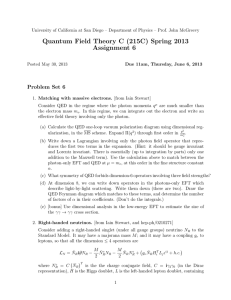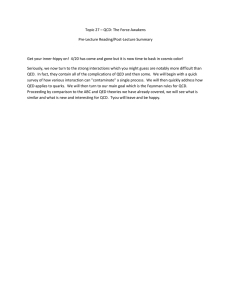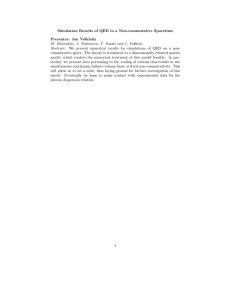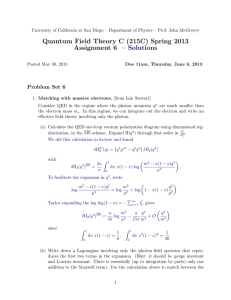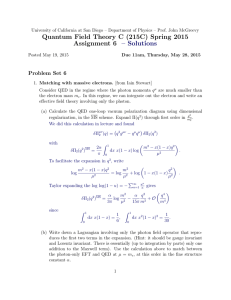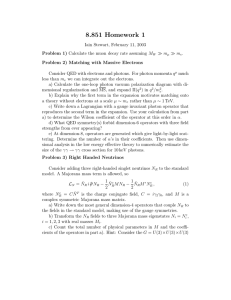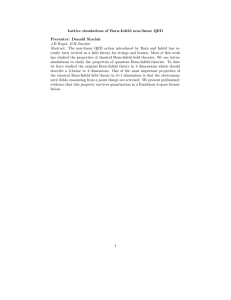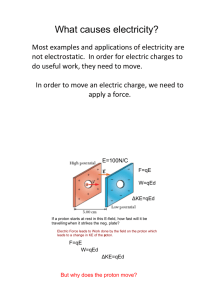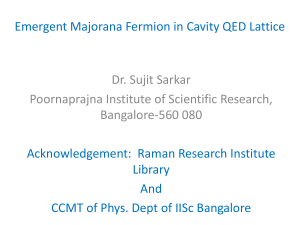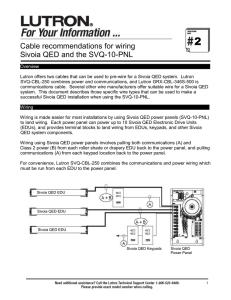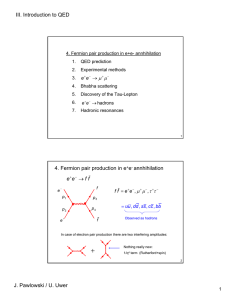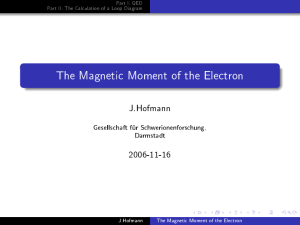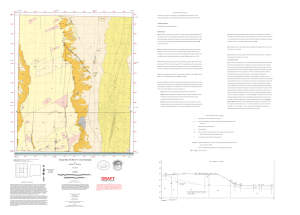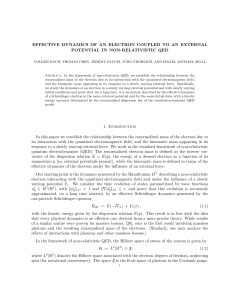Quantum Field Theory C (215C) Spring 2015 Assignment 6
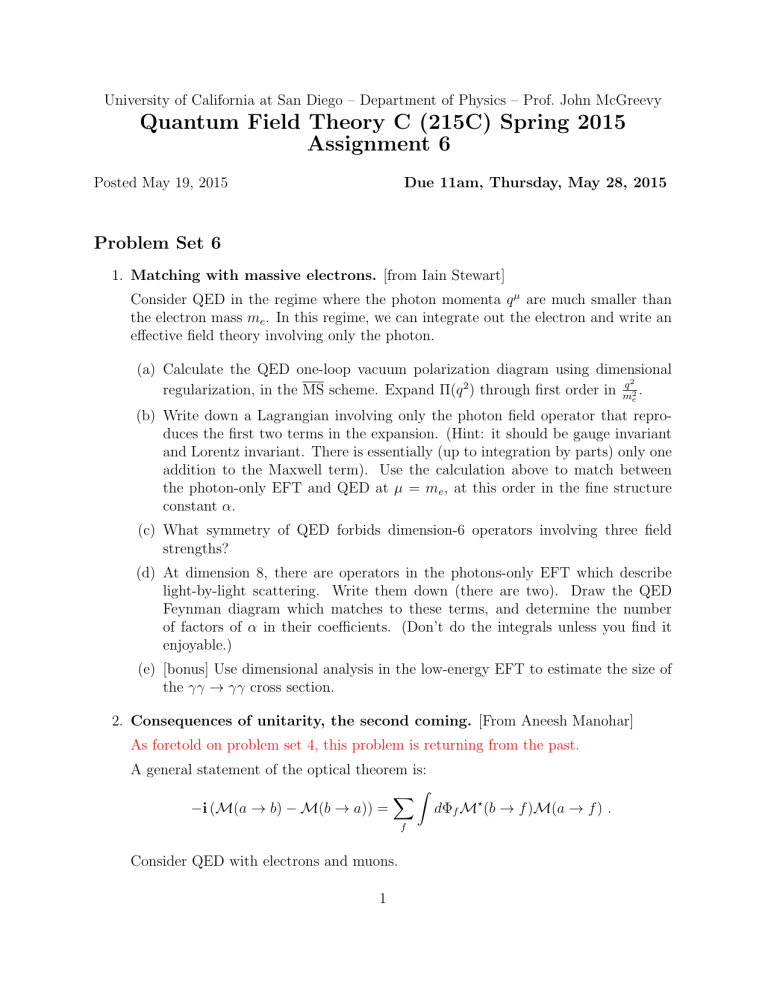
University of California at San Diego – Department of Physics – Prof. John McGreevy
Quantum Field Theory C (215C) Spring 2015
Assignment 6
Posted May 19, 2015 Due 11am, Thursday, May 28, 2015
Problem Set 6
1.
Matching with massive electrons.
[from Iain Stewart]
Consider QED in the regime where the photon momenta q
µ are much smaller than the electron mass m e
. In this regime, we can integrate out the electron and write an effective field theory involving only the photon.
(a) Calculate the QED one-loop vacuum polarization diagram using dimensional regularization, in the MS scheme. Expand Π( q 2 ) through first order in q
2 m
2 e
.
(b) Write down a Lagrangian involving only the photon field operator that reproduces the first two terms in the expansion. (Hint: it should be gauge invariant and Lorentz invariant. There is essentially (up to integration by parts) only one addition to the Maxwell term). Use the calculation above to match between the photon-only EFT and QED at µ = m e
, at this order in the fine structure constant α .
(c) What symmetry of QED forbids dimension-6 operators involving three field strengths?
(d) At dimension 8, there are operators in the photons-only EFT which describe light-by-light scattering. Write them down (there are two). Draw the QED
Feynman diagram which matches to these terms, and determine the number of factors of α in their coefficients. (Don’t do the integrals unless you find it enjoyable.)
(e) [bonus] Use dimensional analysis in the low-energy EFT to estimate the size of the γγ → γγ cross section.
2.
Consequences of unitarity, the second coming.
[From Aneesh Manohar]
As foretold on problem set 4, this problem is returning from the past.
A general statement of the optical theorem is:
− i ( M ( a → b ) − M ( b → a )) =
X
Z f d Φ f
M
?
( b → f ) M ( a → f ) .
Consider QED with electrons and muons.
1
(a) Consider scattering of an electron ( e
−
) and a positron ( e + ) into e
− e + (so a = b in the notation above). We wish to consider the contribution to the imaginary part of the amplitude for this process which is proportional to Q
2 e
Q
2
µ and Q
µ where Q e are the electric charges of the electron and muon (which are in fact numerically equal but never mind that). Draw the relevant Feynman diagram.
(a) Compute the imaginary part of this amplitude (just the Q 2 e of s ≡ ( k
1
+ k
2
)
2
Q 2
µ bit) as a function where k
1 , 2 are the momenta of the incoming e
+ and e
−
(so that k
1
+ k
2 is the 4-momentum of the intermediate photons).
(b) Use the optical theorem and the fact that the total cross section for e + e
−
µ + µ
− must be positive
σ ( e
+ e
−
→ µ
+
µ
−
) ≥ 0
→ to show that a Feynman diagram with a fermion loop must come with a minus sign.
3.
Right-handed neutrinos.
[from Iain Stewart, and hep-ph/0210271]
Consider adding a right-handed singlet (under all gauge groups) neutrino N
R to the
Standard Model. It may have a majorana mass M ; and it may have a coupling g
ν leptons, so that all the dimension ≤ 4 operators are to
L
N
N
R i /
R
−
M
2
N c
R
N
R
−
M
2
N
R
N c
R
+ g
ν
N
R
H i
T
L j ij
+ h.c.
where N c
R
= C N
R
T is the the charge conjugate field, C = i γ
2
γ
0
(in the Dirac representation), H is the Higgs doublet, L is the left-handed lepton doublet, containing
ν
L and e
L
. Take the mass M to be large compared to the electroweak scale. Integrate out the right-handed neutrinos at tree level. [Hint: you may find it useful to work in terms of the Majorana field
N ≡ N
R
+ N c
R which satisfies N = N c
.]
Show that the leading term in the expansion in 1 /M is a dimension-5 operator made of Standard Model fields. Explain the consequences of this operator for neutrino physics, assuming a vacuum expectation value for the Higgs field.
Place a bound on M assuming that the observed neutrinos have masses m
ν
< 0 .
5 eV.
2
